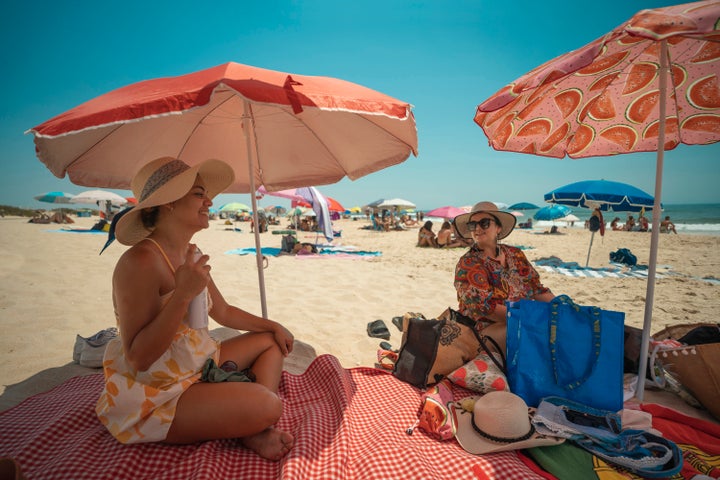And keep in mind: Even if you don’t see a burn, the sun may still be harming your skin.
For many folks, red, itchy and peeling skin is a common occurrence during the summer months. More than one-third of adults in the U.S. get sunburned every year. In most cases, sunburns can be easily managed at home with things like cold compresses, gentle lotion, hydration and a break from the sun.
Sometimes, though, a sunburn might be too severe to treat at home or may be accompanied by symptoms that need medical attention.
Below, dermatologists share the types of sunburns and symptoms that require a doctor’s visit.
Needing medical attention for a sunburn is rare, but extensive blistering over a large portion of your body is a bad sign.
“Sunburns come in all different severities,” said Dr. Jennifer Tang, a dermatologist at the Sylvester Comprehensive Cancer Center at University of Miami Health System.
“The most common sunburn is just a little bit of redness, and that can result in some peeling,” Tang noted — but if it’s worse, “you can get really severe blisters.”
When a lot of the body’s surface is affected, your sunburn might resemble any other type of burn, she added.
“In that instance, when you lose such a portion of your skin barrier, you’re no longer able to regulate your temperature and you lose a lot of water,” she stated. “That’s when we recommend seeking care in the emergency room or a hospital.”
This would look like large, extensive blistering that covers a significant portion — probably around 30% — of your body, added Tang.
At that point, supportive care is necessary so doctors and nurses can help you stay hydrated and perform wound care to keep the burn clean, she said.
But needing medical attention for a sunburn is rare. As a species, our protective mechanisms have evolved so that we generally seek shade or go inside once we notice redness or discomfort from a burn, Tang said.
“Usually, it’s just that redness and the peeling, which is the body’s inflammatory response to the sun that damages our skin cells,” she noted.
A sunburn that requires medial attention tends to happen in more extreme circumstances, like when someone is trapped outside or unable to move into the shade because of an injury, Tang said.
In other words, you likely do not need to rush to the hospital the next time you get a sunburn.
See a doctor if your sunburn is accompanied by heatstroke.
“Generally, most sunburns do not require immediate medical attention, but if they are extensive, some people may feel unwell,” Dr. Kevin Boyd, a dermatologist at Mayo Clinic Health System in La Crosse, Wisconsin, told HuffPost via email.
Since sunburns typically happen when it’s hot out, heatstroke can be a concern — and a crucial reason to seek medical attention, Boyd said.
Heatstroke “is characterized by a body temperature greater than 103, confusion, dehydration and a rapid pulse,” he said, adding that the condition constitutes a medical emergency.

Just because you don’t get sunburned doesn’t mean the sun isn’t harming your skin.
“Even without a sunburn, the sun exposure can increase your risk for skin cancer,” Tang said. “Just because … you’re not getting a sunburn doesn’t mean you’re not being exposed to the harmful effects of UV rays.”
To stay safe in the sun, you should take some precautions.
“The best means of protection from a sunburn include sunscreens, UV-protective clothing and avoidance of the sun’s rays when they are at their most intense, between 10 a.m. and 4 p.m.,” Boyd said.
You should apply sunscreen at least every two hours, and more frequently if you are swimming or sweating, he noted.
“Look for products labeled ‘broad spectrum’ to ensure protection from UVB and UVA rays and with an SPF (sun protection factor) of at least 30,” Boyd said.
Certain people need to be more careful in the sun. Boyd said that it’s “important to be aware of any medications you are taking that could make you burn more easily, such as antibiotics and some acne treatments.”
“I tell my patients to be ‘sun safe’ not ‘sun scared,’” Boyd said. With proper protection like a shirt, a wide-brimmed hat and sunscreen, you can have a safe summer in the sun.
Credit: Source link